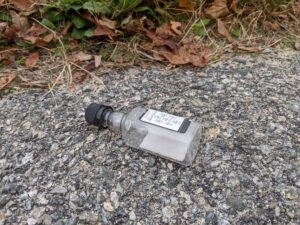 HYANNIS – Where did the idea that you need 10,000 steps a day for optimal health come from? Is it based on scientific research?
HYANNIS – Where did the idea that you need 10,000 steps a day for optimal health come from? Is it based on scientific research?
It turns out the answer is no.
Even though millions of people worldwide keep careful track of their daily steps via fitness trackers, pushing toward the 10,000-step goal, they are working towards a mythical number.
New research now shows that you can receive health benefits walking far fewer steps than 10,000. A study published in the Journal of the American Medical Association examined the step totals and mortality rate of more than 16,000 elderly American women. The study showed that women who took 4,400 steps a day had significantly lower mortality rates compared to the least active women.
Mortality rates continued to drop with increased steps until they reached 7,500 steps, after which the mortality rate leveled out. But the study also showed that even moving as little as 2,000 steps a day (less than one mile) was associated with positive health outcomes.
Although no cardiologist will ever suggest that you exercise less than you possibly can, the lower step count corresponds to what cardiologist Elissa Thompson, MD at Cape Cod Healthcare Cardiovascular Center tells a lot of her patients who are unable to meet such large goals, especially starting off.
“Every little bit counts,” she said. “People can make huge changes to their health if they just get up for a little bit and move around. There is really good evidence that even small changes in your activity level will add up to huge benefits overall in the trajectory of a lifetime, so people shouldn’t look at 10,000 steps as the only way to get healthy. I don’t want people to get discouraged if they can’t do that.”
There is plenty of research to back that up. A study published recently in The BMJ showed that any level of physical activity was associated with a substantially lower risk of mortality. The study looked at more than 36,000 people with an average age of 62.
The maximum risk reduction came with 375 minutes a day of light intensity physical activity or 24 minutes of moderate to vigorous activity such as brisk walking. Those people had a 60 percent less chance of dying than those in the least active group.
Ways to Add Activity
Light intensity physical activity can include household chores, grocery shopping or gardening. Even ambling around the house or yard counted.
The second most sedentary group, which included about an hour of activity a day, actually had a significant reduction in the risk of death too, which points to the fact that any activity can be beneficial. The most sedentary group, with 9.5 or more hours of sitting, was at a significantly higher risk factor for death than any other group.
“Ten thousand steps are a nice round number to work towards, but we know that even little incremental changes in your activity make a huge difference,” Dr. Thompson said. “Walking 10,000 steps has value, but it’s not like you can’t get healthy doing fewer steps. You absolutely can.”
Here are a few of Dr. Thompson’s suggestions of ways to work more activity into your day:
Park further from the door when you go shopping
If you work at a desk all day, get up frequently to walk around the office.
Take a walk on your lunch break.
Pace while talking on the telephone, rather than sit.
Enlist an exercise buddy to motivate you and keep you on track.
Even one small change can add up to a monumental increase in your activity level and fitness over time, Dr. Thompson said.
Another tip that Dr. Thompson uses herself is to have a standing work station for the times she uses a computer. She doubled her physical activity during work hours with just that one change. She has also upped her daily steps by buying herself and her husband a Fitbit. Now they compete to beat each other’s daily steps.
Fitness trackers offer huge benefits, even if you never plan to walk 10,000 steps a day or are unable to reach that goal, according to Dr. Thompson.
“I have a Fitbit and if you get 10,000 steps, it throws you a party and, if you get 20,000 steps, it’s amazing, but what I love about them is that they can show you how inactive you actually are,” Dr. Thompson said. “I find that’s the better use of a fitness tracker. If you are competitive, go for the 10,000 steps. But if you really want to use it for what it’s worth, look at how inactive you might be and try to improve that incrementally.”
Even though the American Heart Association still recommends at least 150 minutes of moderate intensity physical activity a week, they revised their guidelines in 2018 to emphasize the importance of even short burst of physical activity.
The bottom line is that sitting less and moving more is the best way to reduce your risk of dying early. But that doesn’t mean people need to make drastic changes. Setting the same goal for everyone risks discouraging those who need activity the most. A better plan might be to track your current physical activity and then slowly increase it over time so that you are competing against yourself and not an arbitrary number. Your heart and your overall health will benefit.
By LAURIE HIGGINS, Cape Cod Health News






















